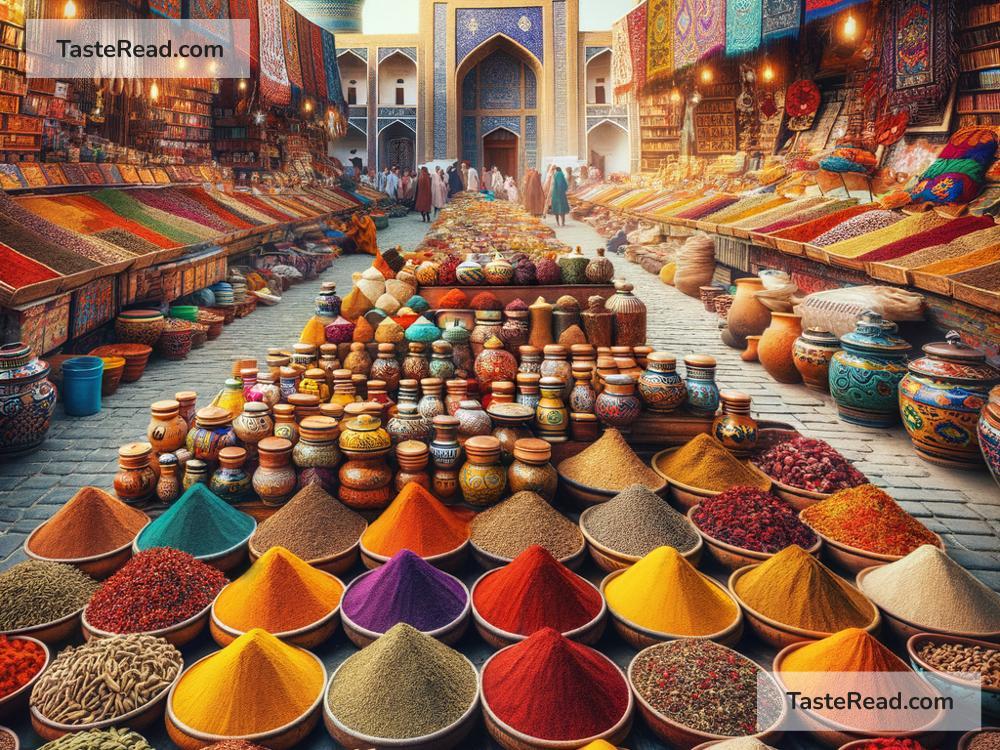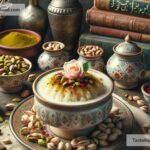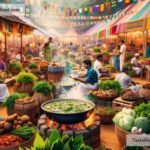Journeying Through Ancient Silk Road Spice Blends in Uzbekistan
Uzbekistan, a land of vibrant colors, rich history, and warm hospitality, has been a crossroads for centuries due to its location along the famous Silk Road. The Silk Road was a network of trade routes that connected Asia, the Middle East, and Europe, bringing goods, ideas, and cultures together. One of the treasures that traveled along these routes was spices. Today, Uzbekistan’s food reveals the deep traditions of these ancient spice blends that shaped the region’s cuisine. Let’s dive into this flavorful journey!
The Role of the Silk Road in Uzbekistan
The Silk Road wasn’t just about silk—it was a highway of international trade, including spices, textiles, and precious stones. Uzbekistan, with cities like Samarkand, Bukhara, and Khiva, became central hubs for merchants from China, India, Persia, and the Mediterranean.
Spices played an important role in ancient times. They weren’t only used to flavor food; they could preserve it, treat illnesses, and even serve as currency. As traders passed through Uzbekistan, they brought exotic spices such as saffron, cinnamon, black pepper, and nutmeg, leaving their mark on the region’s culinary traditions.
A Blend of Cultures in Uzbek Cuisine
Uzbek cuisine reflects the region’s rich history and the spice blends brought by travelers from distant lands. The dishes reflect a harmonious blend of Eastern and Western influences. At the heart of this cuisine are spices that add depth and character to every meal.
Some of the most popular spices in Uzbekistan include:
- Cumin: A staple in Uzbek cooking, cumin has a warm, earthy flavor and aroma that complements meat dishes perfectly.
- Coriander: The seeds of coriander are often ground and added to soups and stews, giving dishes a slightly citrusy flavor.
- Barberries: These small, tangy berries are a signature ingredient in pilaf (plov), Uzbekistan’s most famous dish.
- Saffron: Known as “red gold,” saffron adds a delicate, floral note to rice dishes and is often used sparingly due to its high cost.
- Sesame Seeds: These seeds are used in breads and desserts, adding texture and a nutty flavor.
The Famous Uzbek Pilaf (Plov)
One dish that truly showcases the importance of spices in Uzbek cooking is plov. Plov is a flavorful rice dish cooked with meat, vegetables, and a combination of spices. Variations of this iconic dish exist across Central Asia, but Uzbekistan takes pride in making it the best of all.
The cooking of plov is almost ceremonial, often prepared during festive occasions, weddings, or national holidays. The spices—cumin, coriander, turmeric, and a pinch of saffron—infuse the rice and meat with a rich aroma. Barberries or raisins are sometimes added for a hint of sweetness, creating a perfect balance of flavors.
The Spice Markets of Uzbekistan
If you’re visiting Uzbekistan, a trip to the bustling spice markets is a must. Walking through the markets feels like stepping back in time, with merchants displaying vibrant piles of spices next to dried fruits and nuts. You’ll be enchanted by the colors and aromas that fill the air.
One famous market is the Chorsu Bazaar in Tashkent, Uzbekistan’s capital city. Here, you’ll find everything from freshly ground cumin to delicate threads of saffron. Vendors are friendly and will often let you taste or smell the spices before you buy them. Shopping at the market is not just about buying—it’s an experience of connecting with Uzbek culture.
Cooking with Silk Road Spices
The spices from Uzbekistan are not just for the locals—they’re a gift for travelers who want to bring some of the Silk Road magic home. If you buy spices during your visit, you can experiment with Uzbek-style cooking in your own kitchen.
Try making your own plov or marinating meat with ground coriander and cumin. You’ll discover how spices from Uzbekistan can transform even the simplest dishes into something extraordinary.
Spice and Culture Go Hand in Hand
Uzbekistan’s spice traditions are deeply connected to its history, culture, and people. Food is a cornerstone of Uzbek hospitality, and sharing meals with guests is an important tradition. As you travel through Uzbekistan, you’ll receive warm invitations to try local dishes and experience the warmth of Uzbek culture firsthand.
Spices don’t just add flavor; they tell stories. Every blend reflects the history of trade, migration, and the mixing of cultures. The Silk Road may no longer exist as a trade route, but its legacy lives on in Uzbek cuisine and spice markets.
Conclusion
Journeying through Uzbekistan’s spice traditions is like traveling back in time to the days of the Silk Road. The country’s rich culinary heritage is a reminder of how trade and culture blended together to create something unforgettable. From the aromatic plov to the bustling spice markets, Uzbekistan offers an adventure for your senses and your taste buds.
So, whether you’re strolling through ancient cities or enjoying a meal in the home of a friendly Uzbek host, take a moment to appreciate the flavors that have been passed down through generations. They are the essence of the Silk Road’s legacy, and Uzbekistan keeps them alive in every dish.


